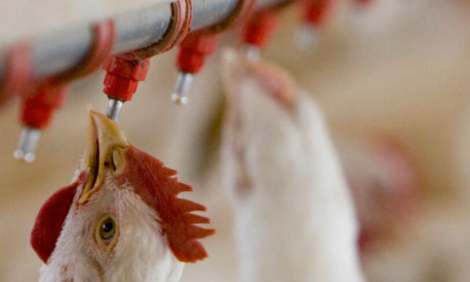



IPPE: Poultry Profitability Likely to Benefit from Low Feed Costs in 2016
US - Speaking at the Poultry Market Intelligence Forum at the IPPE event in Atlanta yesterday, analyst Dr Paul Aho from Poultry Perspectives described how commodity price falls had improved margins, but the possibility of recession in China could put pressure on the poultry industry.He discussed various issues facing the industry, and predicted how the markets will fare in the coming year.
How long will low feed prices persist?
Dr Aho recalled how commodity prices slowly grew in the years 2002 to 2012, before the bubble burst and prices fell towards today's levels.
Whilst oil prices often grab the news, it is corn (maize) and soybean prices that are most important for poultry producers, and Dr Aho he thought that today's prices are near the bottom of the commodity cycle.
Corn and soybean yields have been growing in many key countries, and Dr Aho also discussed the impact of Argentina's new leadership on supplies.
According to him, Argentine soy producers had been holding onto stocks for several years due to issues with the previous government, but the new president promised help for the industry if they exported the products, thus raising money for the country. This has resulted in a glut of Argentine soybeans heading for the ports, which is good news for poultry producers.
Another factor affecting the corn supply in the US is the ethanol mandate, which requires a certain proportion of transport fuel to consist of corn bioethanol. Dr Aho said that when the ethanol proportion was growing it "caused havoc", due to competition with human and animal feed uses for corn, but it has now levelled off and is not causing as many problems for producers.
Looking at the weather he said that moisture conditions looked good currently, but he said that droughts were difficult to predict and gaps between droughts are uneven.
"I see low prices for corn and soybeans for a good long time, it could last a few years, and it's part of the overall drop in commodity prices," Dr Aho concluded on grains.
"When we see oil prices starting to rise again - two, three, four years in the future - that's when we can suspect that grain prices may rise again."
How will global economic conditions affect chicken consumption?
"In 2006 to 2009 we had a big drop in chicken consumption," Dr Aho said. "We weren't used to that - it was very odd."
He explained that the recession played an important part in the consumption fall. Household income fell dramatically until 2012, even though the recession officially ended in 2009, and even now the money families have to spend on meat is still not back up to 2007 levels.
Since then consumption levels have recovered, and Dr Aho said that consumption is back to above where it was in 2006.
Looking to the future, he said that economic growth has aided consumption in the US, but it is unclear at moment whether that growth will continue.
He said a lot will rest on China, and whether it enters recession. Despite Chinese assurances that the economy is expanding, Dr Aho said signals coming out of the country such as lower diesel and electricity use indicate it is not growing.
"Everything points to a possible recession in China," he said, "And if we have a recession in China, then we'll have a world recession, and a recession in the US."
He explained that even though the US does not sell very much to China, it is not immune from the effects of wobbles in the world's second largest economy, because of the reverberations in other countries around the world.
Can consumption levels and exports match production increases?
The US Department of Agriculture has predicted a 2.2 per cent rise in broiler production in the US this year, and Dr Aho said that even this small rise might be out of reach if an economic downturn occurs.
He predicted that deboned breast meat prices will be lower this year than 2015, peaking at $1.40 per pound. 2015 prices also peaked lower than 2014, but Dr Aho said that margins would be better in 2016 due to low feed prices.
Yield, weight and poultry numbers have risen hugely in the last thirty years, which Dr Aho said was a tremendous success story in agriculture.
But along with all that breast meat comes an increase in large leg quarters, which is a problem for carcase balance for American producers.
Typically, Dr Aho said, Americans have eaten one third of the leg quarters, and two thirds have been exported. US poultry exports are made up of 85 per cent dark meat and only 15 per cent white meat.
2015 brought huge problems for poultry exporters, when a number of factors collided to create a collapse in leg quarter prices.
Trade restrictions due to avian influenza, a rising dollar, and a weak global economy coincided with high supplies to cause a "perfect storm" for exporters. In addition, many of the oil producing countries that are suffering from the low prices are also unfortunately big importers of chicken leg quarters.
Dr Aho said disposing of leg quarters continues to be a headache, as production of the largest birds continues to increase.
"There aren't really any good reasons to be optimistic about leg quarters this year," he said.
However, he said that US consumption of dark meat has increased recently and is likely to increase further in future, and wing prices remain stable.








